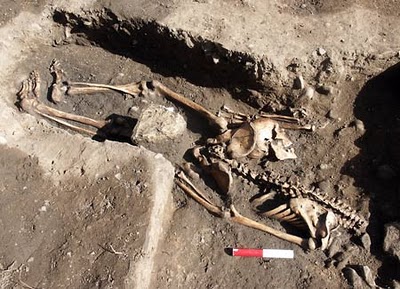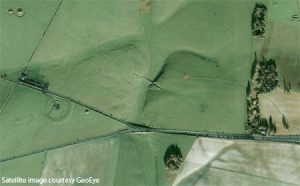 Augmented Reality (AR) seemed a pipe dream not long ago, but today you’ll find AR Japanese girlfriends (no kidding), pets – or ‘Petz’ – for your kids, tattoos, travel applications (read:iPhone or Android-based systems). In fact fighter pilots have been using it for ages (head-up displays for navigational purposes, not Japanese girlfriends, of course). But I must say this is the first ‘AR Stonehenge’ I’ve come across. Take a look at the video below – I’m sure you’ll agree it’s pretty impressive.
Augmented Reality (AR) seemed a pipe dream not long ago, but today you’ll find AR Japanese girlfriends (no kidding), pets – or ‘Petz’ – for your kids, tattoos, travel applications (read:iPhone or Android-based systems). In fact fighter pilots have been using it for ages (head-up displays for navigational purposes, not Japanese girlfriends, of course). But I must say this is the first ‘AR Stonehenge’ I’ve come across. Take a look at the video below – I’m sure you’ll agree it’s pretty impressive.
Augmented Reality – a reality in which virtual, computer-generated images overlay the physical environment, and thus enhance it – has been around for some time, but only recently gained public interest as 3DWorlds become more popular and technology and software costs less staggering. The most advanced systems still require a sound budget, but consumeraimed ARis here to stay.
The ‘Wikitude World Browser‘, which runs on smartphones, says it will make exploring the world a whole lot more exciting. The ARToolKit was recently ported to Flash, making displaying models in your browser possible. And now also…the first (?)ARStonehenge, brought to the web by Digital Digging.
How does it work? The paper you see (under Stonehenge) contains a physical (printed) square marker, which you hold in front of a camera.
Your computer determines the real camera position and orientation relative to that marker (viewpoint tracking).
It then takes the 3D model and renders footage from a ‘virtual camera’ which looks at the model (Stonehenge, here) from the exact same position as your real camera does.
This ‘virtual camera footage’ is then overlaid on the ‘real camera footage’, (more or less) carefully alligning the model on the square marker. That combined view gets then displayed on your monitor or handheld device.
Although we have Virtual Stonehenge ourselves (click here to visit Stonehenge 2400BC), I’d love to give’Stonehenge AR’ a try! (Ionce installed BuildAR, but neverran it.)So, ahem – Dear Sir Digital Digging, we have two stand-alone HDcameras, computing capacity and a good printer! (And are even willing to walk around with an ARStonehenge tattoo if round surfaces can be managed by the software?;))



